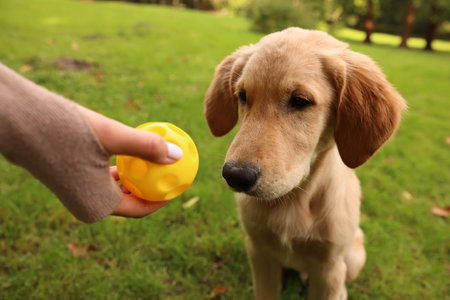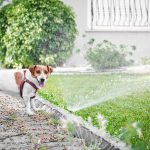1. Identifying Common Household Hazards
Before you start pet-proofing your home, its important to identify common household hazards that could put your furry friend at risk. Many everyday items and areas in your home can be dangerous for pets if not properly managed. Lets take a closer look at some of the most common hazards.
Toxic Plants
Many common houseplants can be toxic to pets if ingested. Some can cause mild irritation, while others may lead to severe health issues or even be fatal. Here are a few plants you should keep out of reach:
| Plant Name | Toxicity Level | Symptoms |
|---|---|---|
| Lilies (for cats) | Highly Toxic | Kidney failure, vomiting, lethargy |
| Aloe Vera | Moderate | Vomiting, diarrhea, tremors |
| Pothos (Devil’s Ivy) | Mild to Moderate | Oral irritation, drooling, difficulty swallowing |
| Sago Palm | Highly Toxic | Liver failure, seizures, death |
| Dieffenbachia (Dumb Cane) | Mild to Moderate | Mouth irritation, difficulty breathing |
Electrical Cords and Wires
Puppies, kittens, and even adult pets may find electrical cords tempting to chew on. This can lead to electric shocks, burns, or even fires. To prevent this danger:
- Use cord protectors or covers to make them less accessible.
- Unplug unused appliances and secure loose wires behind furniture.
- Provide chew-safe alternatives like rubber toys to deter chewing.
- Consider using pet-safe deterrent sprays with bitter flavors.
Small Objects That Can Be Swallowed
Pets love to explore with their mouths, which means small objects can become choking hazards or cause intestinal blockages. Be mindful of the following:
- Coins and Buttons: These can cause toxicity or choking.
- Batteries: If chewed or swallowed, they can leak harmful chemicals.
- Toys with Small Parts: Pieces that break off can pose a risk.
- Hair Ties and Rubber Bands: Pets may swallow these accidentally.
- Socks and Fabric Scraps: These can cause dangerous blockages in the intestines.
Chemical Hazards
Certain household cleaning products and chemicals are extremely toxic to pets. Ensure the following items are securely stored:
- Cleaning Supplies: Bleach, ammonia, and disinfectants can be harmful if ingested or inhaled.
- Pest Control Products: Rodenticides and insecticides should never be accessible to pets.
- Human Medications: Even small amounts of ibuprofen, acetaminophen, or antidepressants can be fatal.
- Essential Oils: Some oils like tea tree and eucalyptus are toxic when ingested or applied directly on pets.
- Antifreeze: This has a sweet taste but is deadly if consumed by pets.
Poorly Secured Trash Bins
Your trash bin might seem harmless, but it often contains food scraps and other dangerous substances for pets. To keep your pet safe:
- Use trash cans with secure lids that pets cannot open.
- Avoid throwing away food scraps like chicken bones or chocolate in an easily accessible bin.
- If possible, store trash bins in cabinets or behind closed doors.
A Quick Recap of Common Household Hazards for Pets:
| Hazard Type | Description |
|---|---|
| Toxic Plants | Certain houseplants can cause poisoning when ingested by pets. |
| Electrical Cords & Wires | Pets chewing on cords may suffer from electric shocks or burns. |
| Small Swallowable Objects | Tiny items like coins or batteries pose choking hazards or internal blockages. |
| Chemicals & Cleaning Products | Household cleaners, human medications, and antifreeze are highly toxic to pets. |
| Poorly Secured Trash Bins | Pets may ingest harmful food scraps or toxic substances from the trash. |
By identifying these potential risks around your home, you’re taking the first step toward creating a safer environment for your beloved pet. Stay tuned as we explore more ways to effectively pet-proof your home!
2. Pet-Proofing Your Living Spaces
Creating a pet-friendly home means making sure your living spaces are safe for your furry friends. From the living room to the kitchen, small adjustments can prevent accidents and keep your pets comfortable. Here are some tips to secure different areas of your home.
Living Room Safety
Your living room is a common area where pets love to lounge and play. To make it safer, consider these adjustments:
| Potential Hazard | Solution |
|---|---|
| Exposed electrical cords | Use cord protectors or hide them behind furniture. |
| Fragile decorations | Place breakable items on higher shelves or secured cabinets. |
| Poorly secured furniture | Anchor bookshelves and heavy furniture to prevent tipping. |
| Potted plants | Avoid toxic plants like lilies and poinsettias; opt for pet-safe plants. |
| Candles and small objects | Keep candles out of reach and store small objects in closed containers. |
Kitchens: A High-Risk Area for Pets
The kitchen can be a dangerous place for pets due to food hazards, sharp objects, and hot surfaces. Follow these steps to create a safer environment:
- Secure Trash Cans: Use a pet-proof trash can with a locking lid to prevent scavenging.
- Store Food Safely: Keep human food, especially toxic items like chocolate, onions, and grapes, in closed cabinets or high shelves.
- Avoid Dangling Cords: Make sure appliance cords are tucked away to prevent chewing or pulling.
- Create Boundaries: If needed, use baby gates to keep pets out of the kitchen while cooking.
- Keeps Paws Off Hot Surfaces: Ensure stove knobs are protected and hot pans are never left unattended.
Beds & Bedrooms: A Cozy but Safe Retreat
Your bedroom should be a safe space for both you and your pet. Here’s how to ensure their well-being:
- No Small Objects on the Floor: Pick up jewelry, hair ties, and other small choking hazards.
- Shoe Storage: Keep shoes inside a closed closet to prevent chewing incidents.
- Avoid Heavy Bedding: Make sure blankets or comforters aren’t too heavy if your pet likes burrowing under covers.
- Create a Pet Zone: Provide a cozy bed or crate so your pet has its own space.
The Bathroom: Hidden Dangers
The bathroom contains several potential dangers for curious pets. To keep them safe:
- Keeps Lids Closed: Always close toilet lids to prevent drinking from them.
- Safeguard Medications & Cleaners: Store all medications, cleaning products, and cosmetics in locked cabinets.
- No Loose Towels or Tissue Rolls: Some pets love shredding paper; keep tissue rolls out of reach.
- Bathe with Caution: Never leave a full bathtub unattended if your pet is nearby.
A Safer Home for Happy Pets
A little effort in pet-proofing goes a long way in preventing accidents and keeping your furry friend comfortable. By securing each living space with simple adjustments, you create a home where both you and your pet can relax safely together.
![]()
3. Creating a Pet-Safe Outdoor Area
Giving your pets access to the outdoors can be a great way for them to get exercise, fresh air, and stimulation. However, it’s important to make sure your yard, balcony, or patio is safe for them. From securing fences to avoiding toxic plants, here’s how you can create a pet-friendly outdoor space.
Securing Your Yard
If you have a backyard, making sure it is fully enclosed will prevent your pets from wandering off or encountering potential dangers. Here are some fencing options:
| Fence Type | Pros | Cons |
|---|---|---|
| Wood Fence | Provides privacy, sturdy, long-lasting | May require maintenance, some dogs may chew on wood |
| Chain-Link Fence | Affordable, durable, allows visibility | Easier for small pets to escape through gaps |
| PVC/Vinyl Fence | No maintenance required, strong and durable | More expensive than wood or chain-link |
| Invisible Fence | No physical barriers, effective training tool | Might not work for all pets, requires training and supervision |
Making Your Balcony or Patio Safe
If you live in an apartment or have a balcony, safety precautions are crucial. Here’s what you can do:
- Add a barrier: Use plexiglass or mesh to close off railings that pets could slip through.
- Avoid gaps: Ensure there are no spaces where small pets could squeeze through.
- Create a shaded area: Provide shade with an umbrella or canopy to protect your pet from extreme sun exposure.
- Avoid leaving pets unattended: Even with safety measures in place, always supervise your pet while they’re outside.
Avoiding Toxic Outdoor Plants
Certain plants and flowers can be dangerous if ingested by pets. Be mindful of what you plant in your yard or keep on your patio. Some common toxic plants include:
- Lilies: Extremely toxic to cats and can cause kidney failure.
- Sago Palm: Can be fatal if ingested by dogs or cats.
- Aloe Vera: While beneficial for humans, it can cause vomiting and diarrhea in pets.
- Daffodils: Can lead to severe gastrointestinal issues and even heart problems in pets.
- Ivy: Can cause skin irritation and digestive issues if consumed.
Paw-Friendly Surfaces
The surfaces in your outdoor space should be safe and comfortable for your pet’s paws. Here are some good options:
- Turf or grass: Soft on paws and provides a natural feel.
- Pavers or bricks: Durable but can get hot in the summer—provide shaded areas.
- Pebbles or smooth stones: Avoid sharp rocks that could injure paws.
The Importance of Supervision
No matter how secure your outdoor area is, always keep an eye on your pet when they are outside. Regularly check fences for gaps or weak spots, ensure plants are non-toxic, and provide plenty of water during warmer months. By taking these precautions, you’ll create a safe outdoor environment where your furry friend can explore without worry.
4. Safe Storage of Food, Medications, and Cleaning Supplies
Keeping your home pet-proof means making sure that food, medications, and cleaning supplies are stored safely out of reach of your furry friends. Many household items can be harmful or even fatal to pets if ingested. Proper storage and organization are key to ensuring their safety.
How to Store Household Chemicals Safely
Household chemicals such as cleaning supplies, detergents, and pesticides should always be stored securely. Here are some tips to keep your pets safe:
- Store all cleaning products in cabinets with child-proof latches or on high shelves.
- Keep all bottles tightly sealed and labeled properly.
- Avoid using open buckets of cleaning solutions—pets may try to drink from them.
- Consider using pet-safe or natural cleaning products when possible.
Safe Storage of Medications
Both human and pet medications should be kept out of reach. Even small amounts of certain medications can be toxic to pets. Follow these guidelines:
- Store all medications in a locked cabinet or a high shelf.
- Avoid leaving pills on countertops or nightstands where curious pets might find them.
- If you drop a pill on the floor, pick it up immediately before your pet has a chance to ingest it.
- Use labeled containers to differentiate between human and pet medications.
Keeping Human Foods Out of Reach
Certain human foods can be dangerous for pets. To prevent accidental ingestion, store food properly:
| Food Item | Toxicity Level | Safe Storage Tips |
|---|---|---|
| Chocolate | Highly Toxic | Store in a closed pantry or upper cabinet. |
| Xylitol (found in sugar-free gum & candies) | Highly Toxic | Avoid leaving gum or candy in purses or on counters. |
| Coffee & Caffeine | Toxic | Keep coffee grounds and tea bags out of reach. |
| Grapes & Raisins | Toxic | Avoid leaving fruit bowls within pets reach. |
| Onions & Garlic | Toxic | Avoid feeding table scraps containing onions or garlic. |
| Dairy Products | Poor Digestion | If feeding dairy treats, do so in moderation. |
Organization Tips for a Pet-Safe Home
A well-organized home reduces the risk of accidental poisoning. Consider these organization tips:
- Categorize hazardous items into separate storage areas (e.g., one cabinet for cleaning supplies, another for medicines).
- Add labels to containers for easy identification.
- If storing items under the sink, install child-proof locks to keep pets from getting inside.
- Avoid placing grocery bags with food on the floor—pets may sniff them out quickly!
The Importance of Proper Labeling
Clearly labeling all potentially dangerous substances can help prevent mistakes. Use stickers or markers to indicate which items are toxic to pets. If you have house guests or pet sitters, make sure they know where hazardous items are stored and how to keep them away from your pets.
5. Emergency Preparedness for Pet Owners
Emergencies can happen when you least expect them, and being prepared can make all the difference in keeping your furry friends safe. Whether its a fire, an earthquake, or a medical emergency, having a plan in place ensures that you and your pets can act quickly and efficiently.
Creating an Evacuation Plan
In case of an emergency requiring evacuation, having a well-thought-out plan is essential. Here are some steps to help you prepare:
- Identify Safe Exits: Know all possible escape routes in your home and ensure they are accessible with your pets.
- Prepare a Pet Emergency Kit: Have a bag ready with food, water, medications, leash, carrier, and any essential items your pet may need.
- Assign Responsibilities: If you live with family or roommates, designate roles for who will grab which pet and supplies during an evacuation.
- Practice Drills: Run through evacuation drills periodically so both you and your pets know what to do in an emergency.
Building a Pet First-Aid Kit
A pet first-aid kit can be lifesaving in case of injury or illness. Keep this kit easily accessible and check it regularly to ensure supplies are up to date.
| Item | Purpose |
|---|---|
| Gauze & Bandages | To cover wounds and stop bleeding |
| Antiseptic Wipes | To clean minor cuts or scrapes |
| Tweezers | For removing splinters or ticks |
| Dose of Pet Medications | If your pet requires regular medication |
| An Extra Leash & Collar | In case you need to secure your pet quickly |
| A List of Emergency Contacts | Your vets phone number and nearby animal hospitals |
Preparing for Specific Emergencies
Fires
- Paws Off Open Flames: Keep pets away from candles, fireplaces, and stoves.
- PET Alert Stickers: Place stickers on windows to inform firefighters about pets inside.
- Create a Safe Haven: Identify a location where pets can be safely contained if needed.
Earthquakes
- Create a Safe Space: Have a secure area where pets can take shelter during shaking.
- ID Tags & Microchips: Ensure your pet has proper identification in case they get lost.
- Avoid Unstable Objects: Secure heavy furniture that could fall and injure pets.
Medical Emergencies
- Keen Observation: Learn to recognize signs of distress like vomiting, lethargy, or difficulty breathing.
- Know Basic First Aid: Familiarize yourself with CPR for pets and how to handle choking incidents.
- Emergency Vet Locations: Identify nearby 24-hour veterinary clinics in advance.
No one likes to think about emergencies, but being proactive can save lives. By having an evacuation plan, a stocked pet first-aid kit, and knowing how to react in different situations, you can ensure your furry friend’s safety no matter what comes your way.


